Precision Dredge Pilot Program
New Bedford Harbor Superfund Site
As both a dredging contractor and consulting engineer in the 1990’s, Lally identified shortcomings of conventional and environmental dredging technologies available in North America, and sought to improve performance in the areas of dredging accuracy, environmental safeguarding, access, production, and cleanup efficiency. Based on years of dredging field work and global research on numerous marine and terrestrial technologies, he began to foster new approaches for cleanup of major U.S. sediment remediation sites, including specifically Superfund mega-sites in U.S. Environmental Protection Agency (USEPA) Regions 1, 2 and 10 (New England, New York and Pacific Northwest).
In the late 1990’s, Lally postulated and had opportunity to propose to USEPA Region 1 and United States Army Corps of Engineers – New England District (USACE-NAE) an innovative shallow draft, precision mechanical – hydraulic transport dredge system for the remediation of over 900,000 cy of sediments heavily contaminated with PCBs at the New Bedford Harbor Superfund Site.
This hybrid system was based to a large degree on the pioneering work of the C.F. Bean Corporation of New Orleans and Royal Boskalis Westminster of The Netherlands. With the go-ahead from USEPA and USACE, Lally developed and managed the Pre-Design Field Test (PDFT) Program conducted in New Bedford Upper Harbor in summer 2000. This work included the design of a series of dredge performance tests, precision contour dredge plan and dredged material management plan; development of contract documents; coordinating pre-construction and day-to-day field operations with the contractor Bean Environmental, USACE, USEPA, numerous consultants; and authoring a comprehensive evaluation report.
Several industry-defining innovative technologies and methods were introduced by the project, including;
- Precision Excavator Dredge with Real-Time Kinematic (RTK) GPS
- Sealed, Level-Cut Clamshell Bucket with 360o Rotator
- Dredge and Bucket Positioning System (DBPS) with Wireless Telemetry
- Slurry Processing Unit (Bean-patented) with Recirculation System
- Moonpool with integrated silt curtain for water quality control
- Shallow Draft Barge Platform
- Precision Dredge Prism Design
- Real-time Pre- and Post-Dredge Sampling
- Spillage (Residuals) Management Techniques
- Real-time Sediment Monitoring
- Water Reduction Strategies
Numerous performance tests were conducted over a range of conditions, including;
- Dredging Accuracy
- Real-time Dredge Prism Tuning
- Mechnical and Hydraulic (System) Production
- Solids Concentration of the Dredge Slurry
- Recirculation System Effectiveness
- PCB Removal Efficiency
- Residuals Measurement
- Water Quality Monitoring
- Air Quality Monitoring
A focus of the pilot project was the development and testing of a new precision controlled, sealing clamshell bucket delivered from The Netherlands by Boskalis. The bucket is operated from an excavator via the hydraulic controls and 360-degree rotor. This rotation allows a rectangular cut pattern with uniform, repeatable overlap, and no gaps between grabs, as opposed to imprecise ‘pendulum’ placement by crane-operated clamshell buckets. Of key importance, the bucket closes on a level plane, not a conventional scalloped profile, to achieve a near horizontal finish surface at the desired target depth. This significantly minimizes the removal of unnecessary clean sediment below the contaminated inventory, to realize significant savings in terms of treatment, transport and disposal costs. For spillage control, the fully sealed level-cut bucket incorporated mechanically-actuated vents which are open when the bucket is open to minimize resuspension upon approach to the seabed, and close when the bucket closes, to minimize loss.
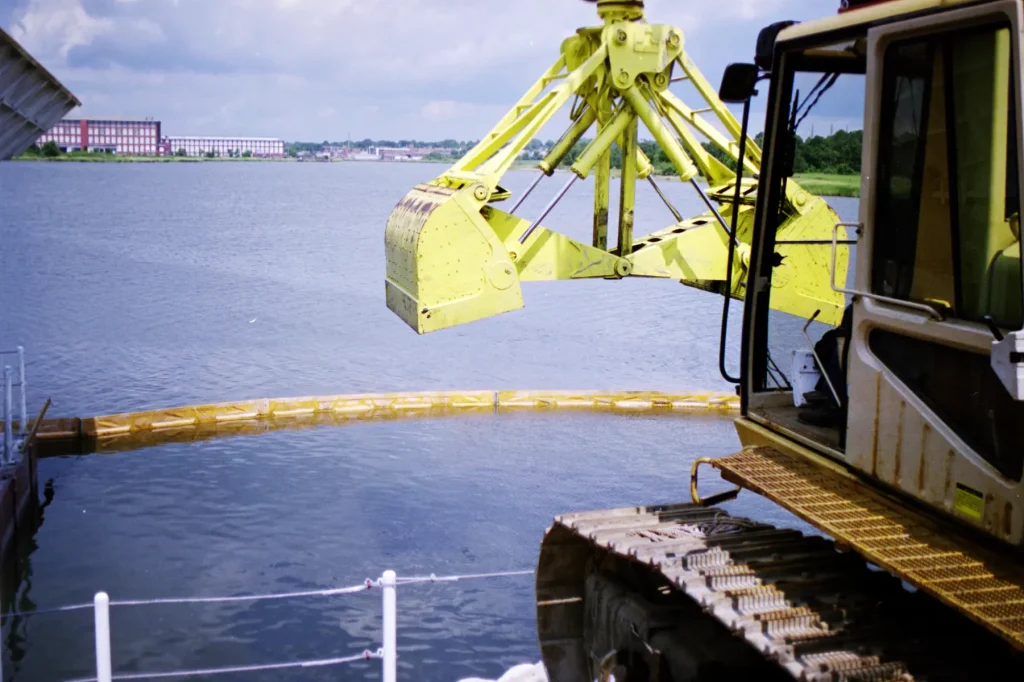
To augment dredging accuracy and cleanup efficiency testing, in both vertical and horizontal planes, Lally and the contractor developed a precision contour dredge prism based on high resolution vibracore sediment samples, across a 1+ acre area in the center of the harbor, to best represent typical physical, geotechnical and contaminant conditions of the overall site. The plan would be adaptable based on real-time pre- and post-dredge sampling and visual observation of sediment in the dredge bucket, again to inform the accurate removal of contaminated sediment and avoidance of uncontaminated native material.
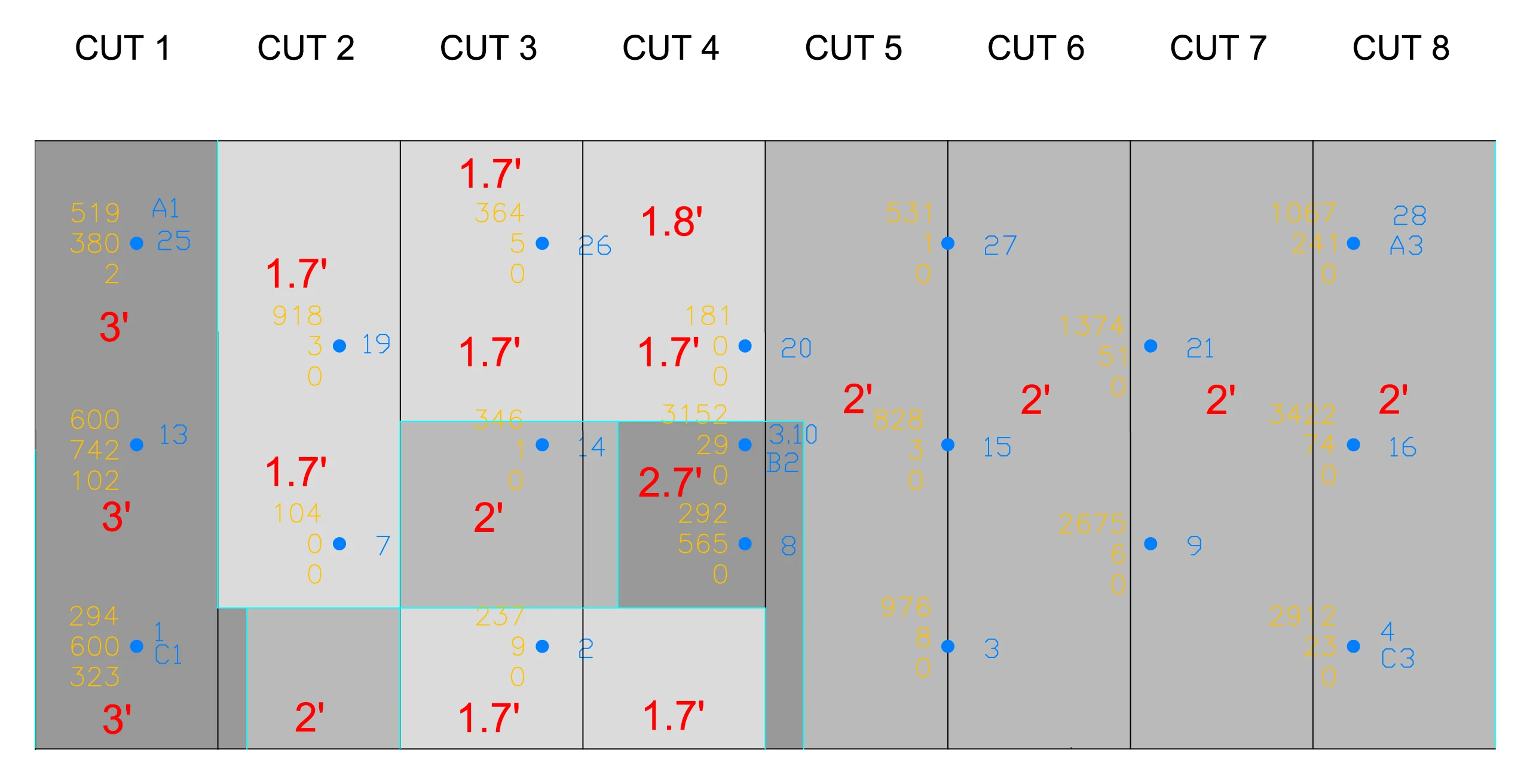
The electronic dredge and bucket position system (DBPS) was integrated with then leading-edge RTK-DGPS and Bean’s proprietary monitoring software (CMS) to provide the operator and project personnel real-time, heads-up display of the precise location of the bucket cutting edge in relation to the existing surface and target elevation.
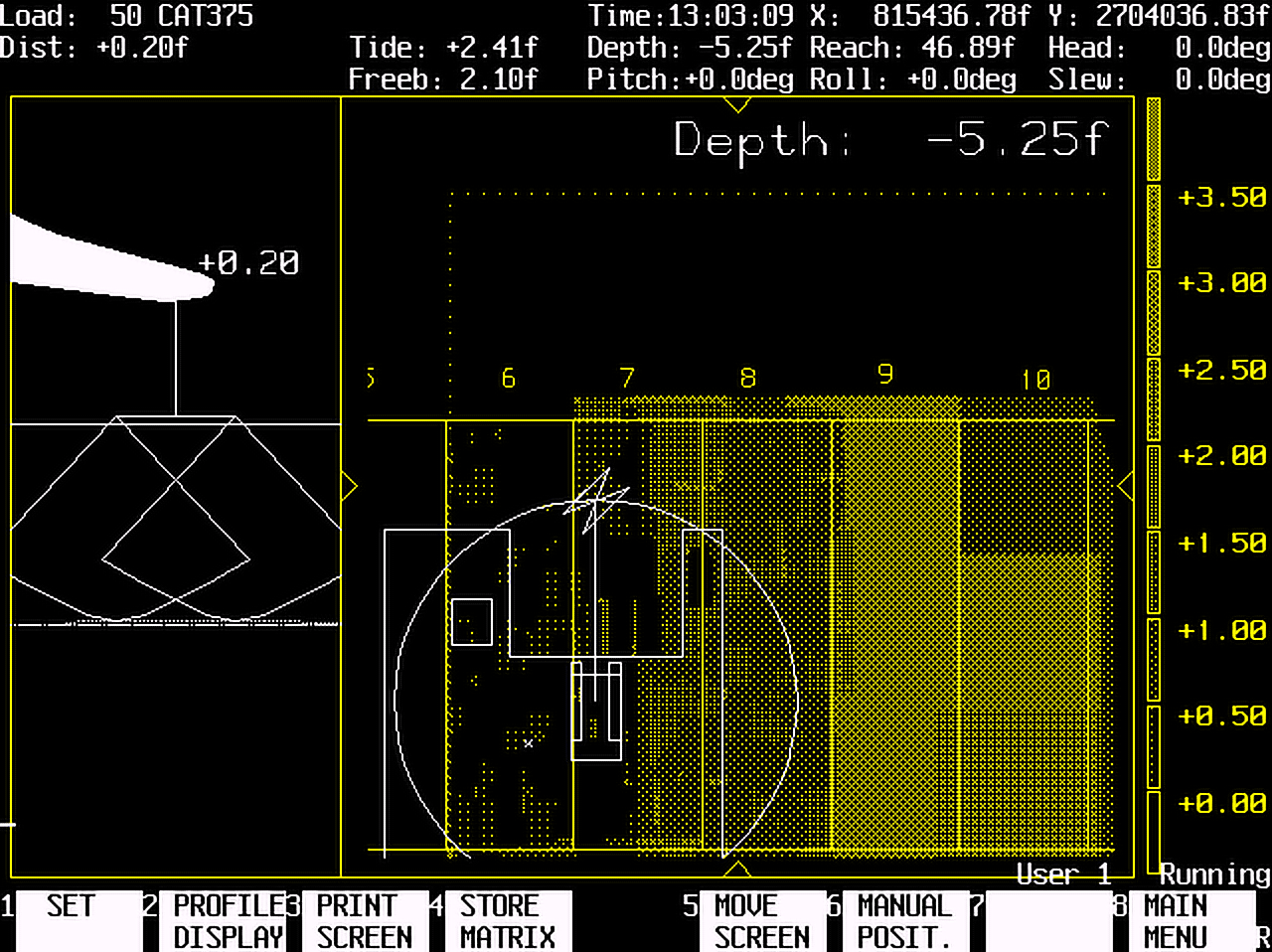
The project set a new standard for dredging accuracy with 83% of the post-dredge survey within 4 inches of the dredge prism, and a mean deviation from target elevation of 0.12 ft.
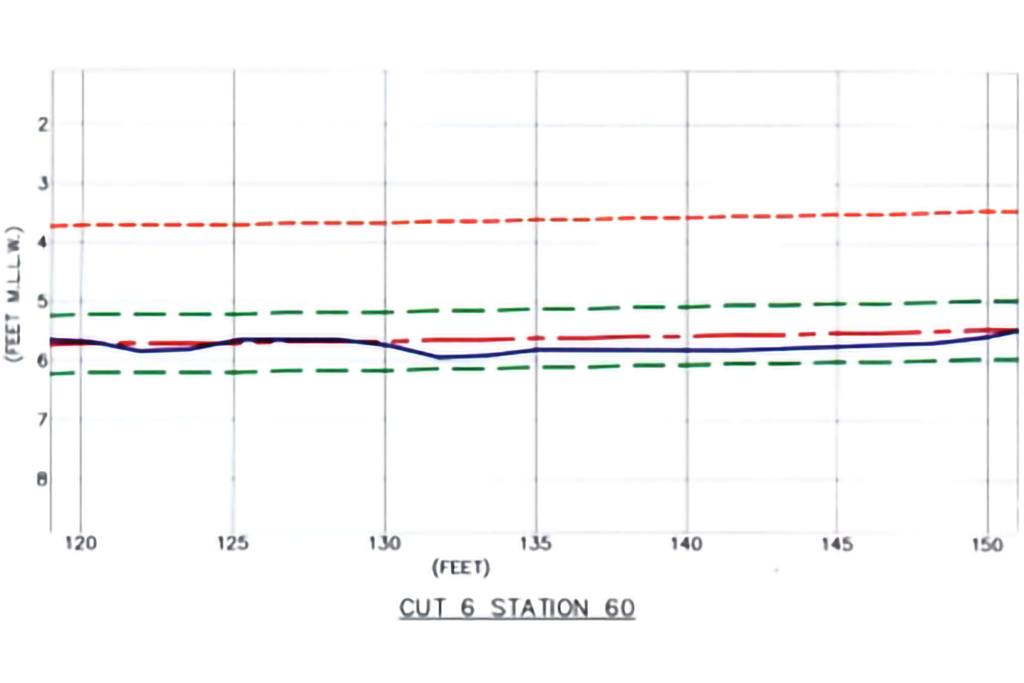
The concept of real-time dredge prism tuning was developed during project construction. Through observations of dredged material as it was evacuating the bucket into the hopper, and post-dredge sampling immediately following dredge set completion, the engineer on board could make an initial determination of whether contaminated material had been adequately removed or overpenetrated, with adjustments to the dredge prism made for improved cleanup efficiency.
Numerous new performance metrics emerged from the project including dredging production, sediment sampling and dredge prism accuracy, water management, residuals management, contaminant cleanup efficiency, and air and water quality impact control.
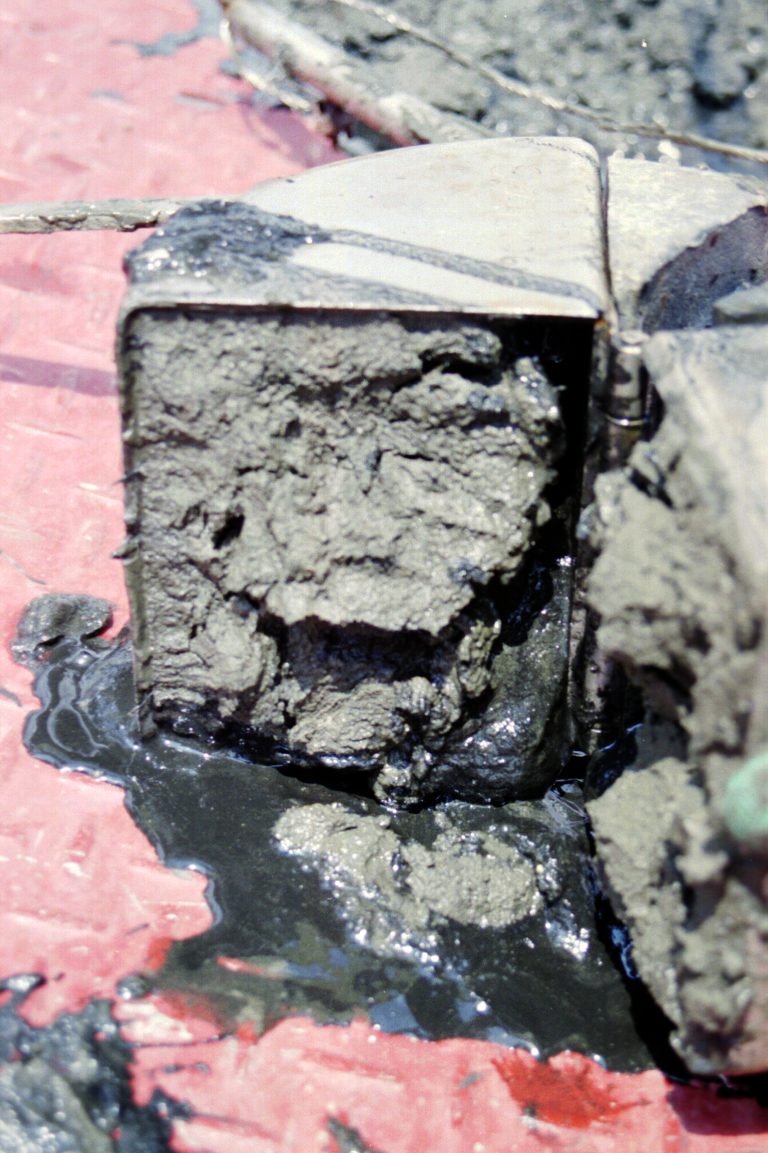
Results from the project were synthesized for use in developing the New Bedford Harbor Superfund Site full-scale remediation plan, and eventually would be applied to the project during the project Cleanup Phase in 2017-2020 to bring the project to successful completion. The advancements from the 2000 pilot project continue to make significant contributions to the North American sediment remediation sector at numerous sites.
Expertise
Development of Precision Dredging Technologies and Implementation Approaches
Pilot Project and Construction Management
Precision Contour Dredge Prism Design
Dredged Material Management
Field Data Collection and Analyses
Study Report Preparation
Industry Education and Knowledge Sharing
Location
North America
Period
1995 – 2002
The Precision Dredging and Design Advancements introduced at this 2000 Pilot Project continue to serve as the Basis for Most Sediment Cleanup Projects in North America.